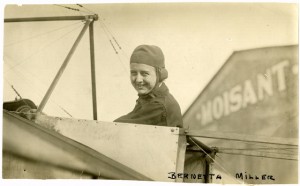I’ve loved this book, [amazon_link id=”014101590X” target=”_blank” ]Turing’s Cathedral: The Origins of the Digital Universe[/amazon_link] by George Dyson. It’s a history of the days when computers were so new and rare that they had names – ENIAC, MANIAC, JOHNNIAC, Baby – and of the early history of the Institute for Advanced Studies at Princeton, and of bits of the career of John Von Neumann and other mathematicians and engineers. It’s the story of the days when the world had 53 kilobytes of random access memory altogether, a significant proportion of them in Princeton, New Jersey.
[amazon_image id=”014101590X” link=”true” target=”_blank” size=”medium” ]Turing’s Cathedral: The Origins of the Digital Universe (Penguin Press Science)[/amazon_image]
It’s also about the relationship between the Second World War, and subsequent military funding for Cold War atomic research, and digital innovation. Military needs so often drive major technological innovations. Part of the story concerns Norbert Wiener and Julian Bigelow, researching how to improve the trajectory of anti-aircraft fire during the war, as London was blitzed. My late mother, as she explains in this video, sat outside the gun emplacements in East London during the Blitz shouting instructions to gunners as they aimed at aircraft overhead – she could have done with the innovation a bit sooner. (It was lovely to have this excuse to watch it again and remember her on UK Mothers’ Day.)
One of the things I love about the story is the sense it gives of the atmosphere of the new research establishment and the personalities, and the way invention rests on both a collection of happenstances and a large number of individuals. Turing’s Cathedral has similarities to some other recent histories of innovation, such as Jenny Uglow’s outstanding [amazon_link id=”0571216102″ target=”_blank” ]The Lunar Men[/amazon_link].
Dyson is very good at describing the people involved, all extraordinary, from John von Neumann down. For example, a paragraph summing up Gödel’s famous incompleteness result (which I sometimes think I understand, if I concentrate hard – after all, I did read Douglas Hofstadter’s [amazon_link id=”0140289208″ target=”_blank” ]Gödel, Escher, Bach[/amazon_link] – twice) is followed by this:
“After retreating to the sanatorium at Purkersdorf, where he was diagnosed with nervous exhaustion, he returned to Princeton in September of 1935, where he fell into an even more severe depression, resigning his position and returning to Austria at the end of November. He readmitted himself to the sanatorium in Rekawinkel, and then recovered sufficiently to spend several weeks with his future wife, Adele Nimbursky (nee Porkert), a Viennese cabaret dancer.”
Whoah! Tell me more about the Viennese cabaret dancer! The IAS website tells me he had met her when he was 21, in the Vienna nightclub ‘The Moth’. It was his second relationship with an unsuitable older woman, to the annoyance of his parents.
I also like Bernetta Miller, an administrator at the IAS in its early days. She was the fifth woman to get a pilot’s licence in the US, received the Croix de Guerre in World War I for assisting the injured Allied troops and visiting the front lines to take cigarettes to the men, and then became bursar of the American School in Istanbul. After the war she settled with her partner Betty Faville, and stood between Albert Einstein and the world until fired by Robert Oppenheimer, who didn’t like her. He goes down in my estimation, I must say. Strong women – like Bernetta Miller and indeed Kathleen Coyle – not only helped win the war, but were vital to the far harder task of building post-war society.

Bernetta Miller
There’s so much more, most of it about the construction of the computers. Do, do read it. I’ve not quite finished yet, but this line from the Introduction sums up the book: “In answering the Entscheidungsproblem [David Hilbert’s ‘Decision problem’], Turing proved that there is no systematic way to tell, by looking at a code, what that code will do. That’s what makes the digital universe so interesting, and that’s what brings us here.” We don’t know where we’re going, but it helps to understand the origins.
